Few things Should know before you install your smart lock.
DIY vs. Professional
First, decide if installing your lock is a DIY or professional job. Note that if you go the professional route, it’ll cost anywhere from $307 to $617 on average. Add that to the average cost of the smart lock itself,$150, and you may change your tune on installation.
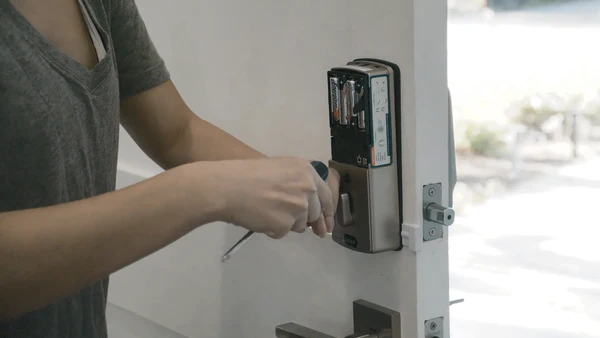
Required Specs is what you need.
Before making a lock purchase, it is crucial to be aware of the necessary requirements. These could involve having certain tools, a specific type of lock or door, or even a home security system. For instance, you might require a deadbolt, specifically a single-cylinder deadbolt, an indoor outlet, or a cylinder door lock. Taking these considerations into account will ensure that you select the right lock that suits your needs and security preferences.
Installation Instructions
Installation steps for a smart lock can vary depending on the specific model and manufacturer. However, a general outline of the process might be as follows:
- Begin by preparing your existing deadbolt.
- Remove the existing thumb latch.
- Get the mounting plate ready.
- Attach the mounting plate securely.
- Connect the adapter to the lock.
- Unfasten the wing latches.
- Install the new lock in place.
- Take off the faceplate.
- Remove the battery tab.
Put the faceplate back in position, and so on.
Tip: For enhanced door security, consider starting with a WiFi-connected lock. Additionally, you can add door sensors to your door frame, which will send you alerts whenever anyone enters or exits your home.
After inserting the batteries and completing the lock installation, it is advisable to test the locking mechanism to ensure that it functions properly.
App Setup
Now that you’ve installed the physical lock, it’s time to make it smart by setting up the app. Here’s how you connect the Tuya Smart Lock to the app, specifically:
- Download the app from the App stores.
- Create an account.
- Add the lock.
- Name the lock as you like.
- Connect the lock to your Wi-Fi network.
- Set up smart home integrations.
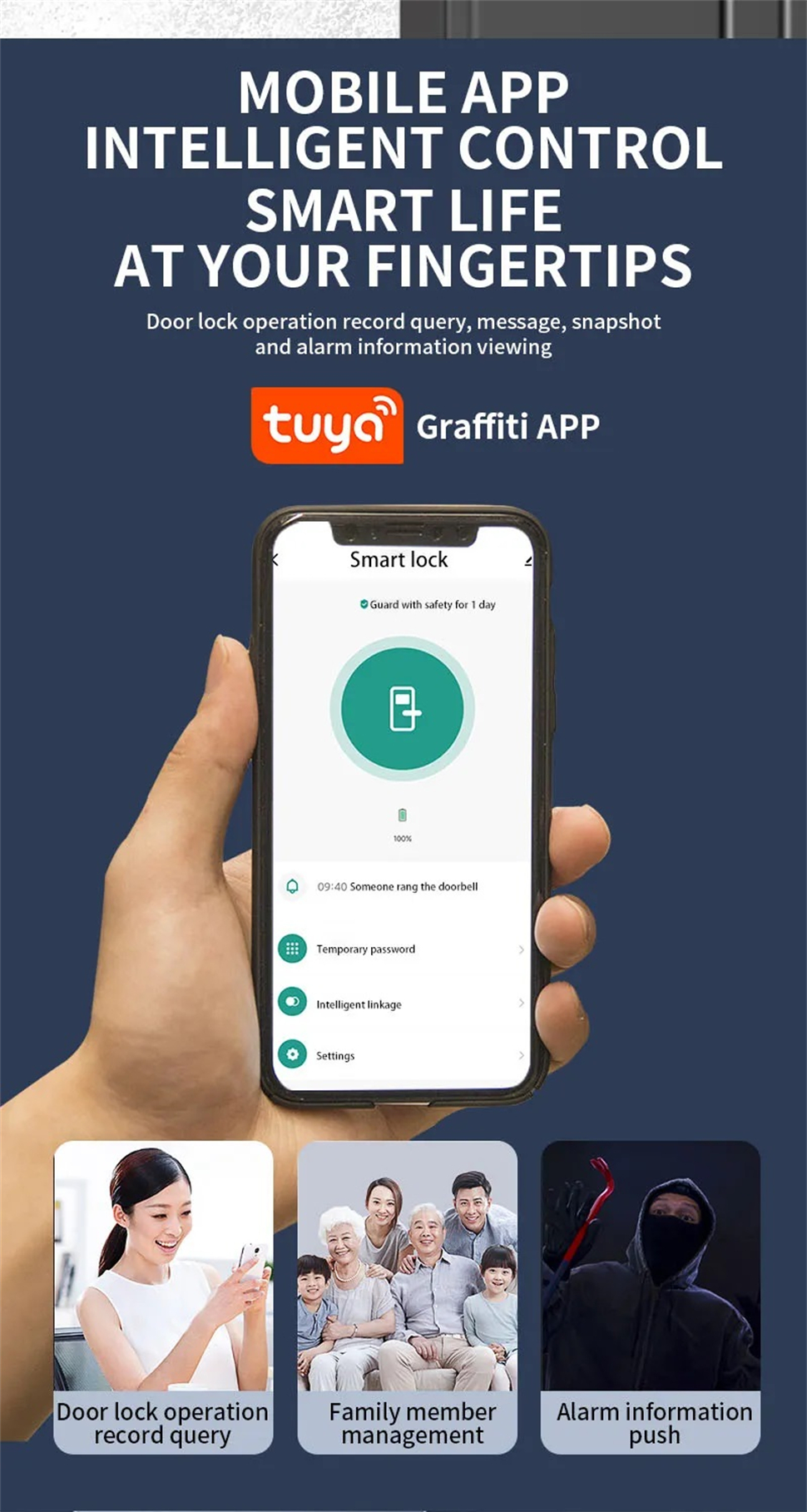
The Benefits and Drawbacks of Smart Locks
Smart locks offer various benefits, but they do come with a few drawbacks to consider. Despite our appreciation for them, it's important to acknowledge their imperfections. One notable drawback is their vulnerability to hacking, similar to other Internet of Things (IoT) devices. Let's delve deeper into this matter.
- Prevents package theft: With the ability to grant remote access to your Amazon delivery driver, you can bid farewell to the worry of package theft.
- No keys needed: No need to worry about forgetting your office key anymore. A keypad lock ensures you'll never be locked out in unfavorable weather conditions.
- Passcodes for guests: To grant remote access to individuals, you can furnish them with temporary passcodes. This approach is considerably more effective in deterring break-ins compared to leaving a key beneath a doormat.
- Event history: If you've ever been curious about the exact arrival time of your dog sitter at your home, you can review the lock's activity log using its mobile application.
- No lock picking or bumping: This exemption doesn't extend to smart locks that remain compatible with traditional keys. Nonetheless, if your smart lock lacks a key slot, it remains impervious to both lock picking and bumping attempts.
Cons
- Hackable: Similar to how smart security systems can be compromised, smart locks are also susceptible to hacking. Particularly if you haven't established a robust password, hackers could potentially breach your lock and subsequently gain entry to your residence.
- Depends on Wi-Fi: Smart locks that rely solely on your Wi-Fi network might encounter problems, particularly if your Wi-Fi connection isn't consistently reliable.
- Depends on batteries: In cases where your smart lock isn't directly connected to your home's electrical grid and instead operates on batteries, there's a risk of the batteries depleting, leaving you locked out.
- Expensive: As previously mentioned, the average price of smart locks is around $150. Hence, if you opt for professional installation and intend to equip multiple ground-level doors, the expenses can easily amount to hundreds or more.
- Difficult to install: Among the array of Internet of Things (IoT) products we've assessed, smart locks proved to be the most challenging to install, especially when integrating them into existing deadbolt setups requires hardwiring.
Note: We recommend getting a smart lock with a key slot, so if your Wi-Fi or batteries fail, you still have a way inside.
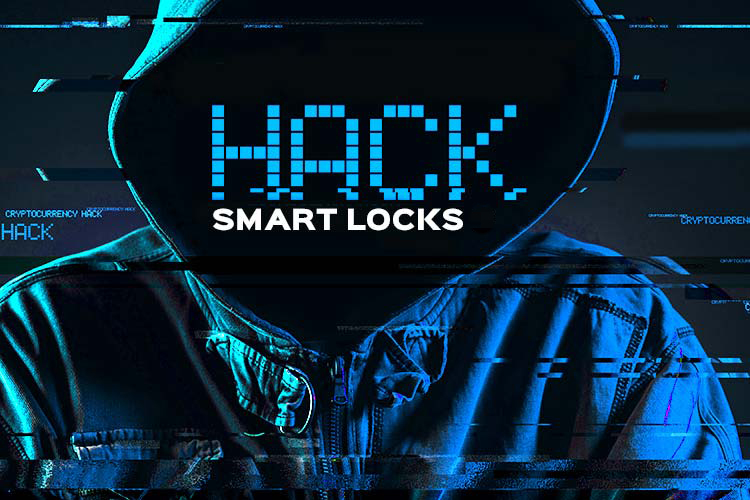
How to choose a smart lock?
As you embark on your quest for the ideal smart lock, it's important to have some key factors in mind. Here's a guide to help you make the best choice:
Smart Lock Design
- Style: Smart locks offer a diverse range of styles, spanning from traditional to contemporary. Given their visibility from the street, it's crucial to select a style that harmonizes with your home's overall aesthetic.
- Color: Smart locks are available in a spectrum of colors, often including blacks and grays. Opt for a smart lock that adds a touch of flair to enhance your home's curb appeal.
- Touchpad vs. key: The decision between a touchpad and a key slot involves trade-offs. While a key slot introduces vulnerability to picking and bumping, it serves as a safeguard against being locked out during Wi-Fi failures or battery depletion.
- Power: Smart locks come in both hardwired and wireless variants. Hardwired models may present a more intricate installation process but eliminate concerns about battery life, focusing instead on power outage readiness. Conversely, wireless smart locks typically sustain power for six months to a year, offering low-battery notifications on your smartphone before needing a recharge.
- Durability: Given that most smart locks are positioned on the exterior of deadbolts, considering two factors is essential: IP rating, which gauges water and dust resistance, and the temperature range within which the lock operates optimally.
|
IP Rating |
Solids (First Digit) |
Liquids (Second Digit) |
|
0 |
Not protected |
Not protected |
|
1 |
Large bodily surface like the back of a hand |
Dripping water falling from above |
|
2 |
Fingers or similar objects |
Dripping water falling from a 15-degree tilt |
|
3 |
Tools, thick wires, and more |
Spraying water |
|
4 |
Most wires, screws, and more. |
Splashing water |
|
5 |
Dust-protected |
Water jets 6.3 mm and below |
|
6 |
Dust-tight |
Powerful water jets 12.5 mm and below |
|
7 |
n/a |
Immersion up to 1 meter |
|
8 |
n/a |
Immersion over 1 meter |
In your pursuit of the perfect smart lock, it's crucial to comprehend the various features that contribute to its performance and security. Here's an in-depth exploration of key elements for your consideration:
IP Rating - Defense against Solids and Liquids: The IP rating of a smart lock gauges its vulnerability to solids and liquids. Look for a model with an IP rating of at least 65, indicating exceptional resistance to dust and the ability to withstand low-pressure water jets.4
Temperature Tolerance: A smart lock's temperature tolerance is a more straightforward factor. The majority of smart locks operate efficiently within a temperature range spanning from negative values to 140 degrees Fahrenheit, ensuring suitability across diverse climates.
Tamper Alarm: The inclusion of a tamper alarm is paramount. It ensures that your smart lock promptly alerts you in the event of any unauthorized tampering attempts, thereby reinforcing your security measures.
Connectivity Options: Smart locks typically establish connections with your mobile app via Wi-Fi, although certain models also employ Bluetooth, ZigBee, or Z-Wave protocols. If you're unfamiliar with these communication standards, you can gain a better understanding by comparing Z-Wave versus ZigBee.
Compatibility and Prerequisites: Prioritize a smart lock that seamlessly integrates with your existing lock setup and doesn't demand additional tools beyond your current toolkit. This approach guarantees a hassle-free installation process.
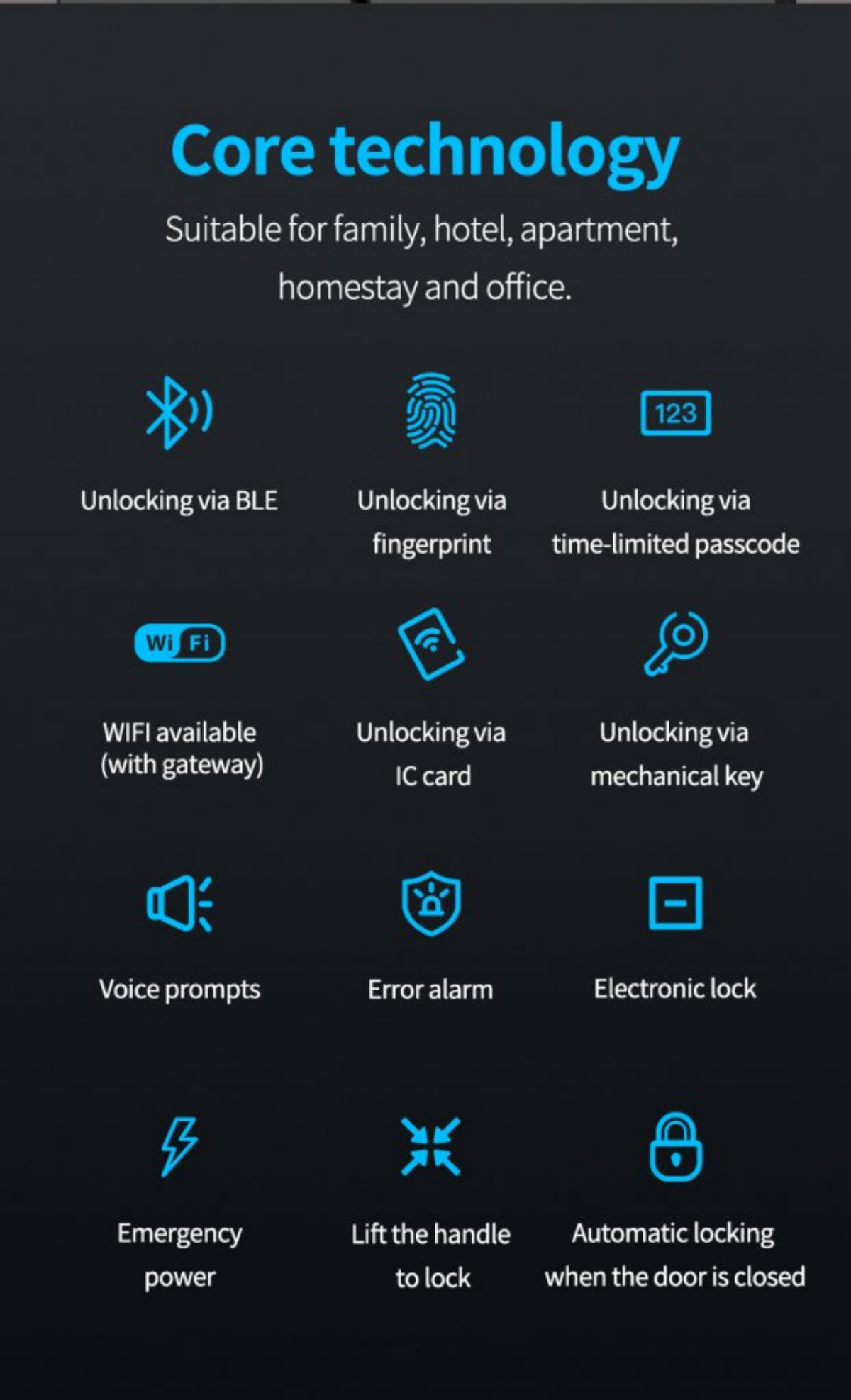
Enhancing Smart Lock Features
• Remote Accessibility: Naturally, your smart lock should grant you the ability to manage it remotely from any location with an internet connection. This implies that the accompanying mobile app should offer seamless functionality.
• Timed Scheduling: For those arriving home at consistent times, the convenience of an automatically unlocked door awaits. This feature is equally advantageous for children who spend a few hours alone at home after school.
• Integration with Smart Home Platforms: If your smart home setup is already in place, seek a compatible smart lock that seamlessly syncs with voice assistants such as Alexa, Google Assistant, or Siri. This compatibility empowers your smart lock to initiate actions on your existing IoT devices, facilitating effortless home automation.
• Geofencing Capability: Geofencing adjusts your smart lock based on your phone's GPS location. As you approach your residence, the smart lock can unlock and vice versa. However, geofencing introduces certain security considerations, such as the potential to unlock when passing by without entering your home. Additionally, it might not suit apartment living, where the door could unlock upon entering the lobby. Assess whether the convenience of geofencing outweighs the security implications.
• Guest Privileges: Providing access to visitors when you're away is made possible through temporary passcodes. This feature proves invaluable for housekeepers, delivery personnel, and home service technicians.
• Activity Log: Your smart lock's app maintains a comprehensive record of its daily activities, allowing you to monitor door openings and closures.
• Auto-Lock Feature: Certain smart locks offer the convenience of automatically locking your doors upon leaving the premises, eliminating the uncertainty of whether your door was left unlocked.
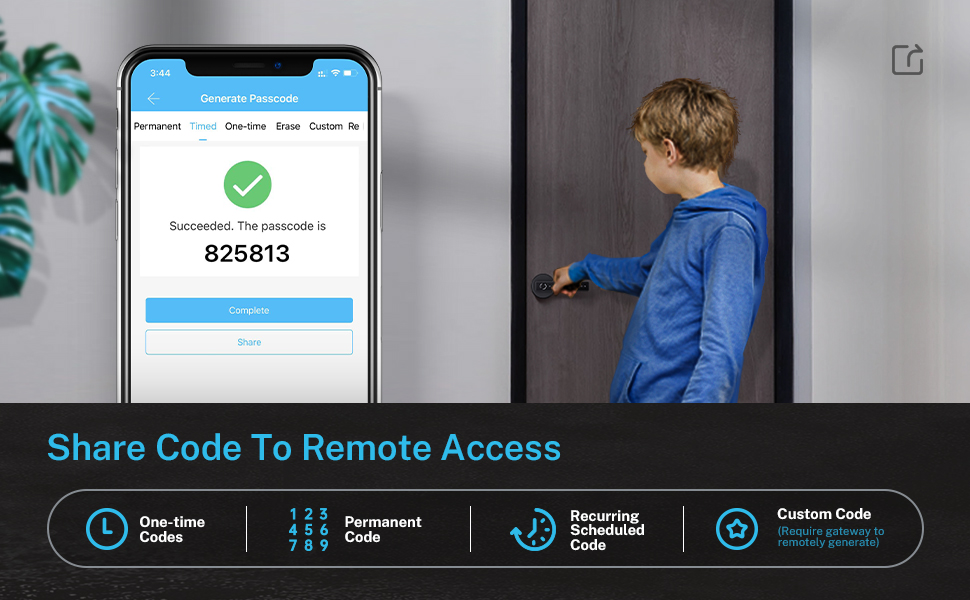
Have a look at our Smart lock selection Suggestion.
| Face Recognition Smart Entry Lock | 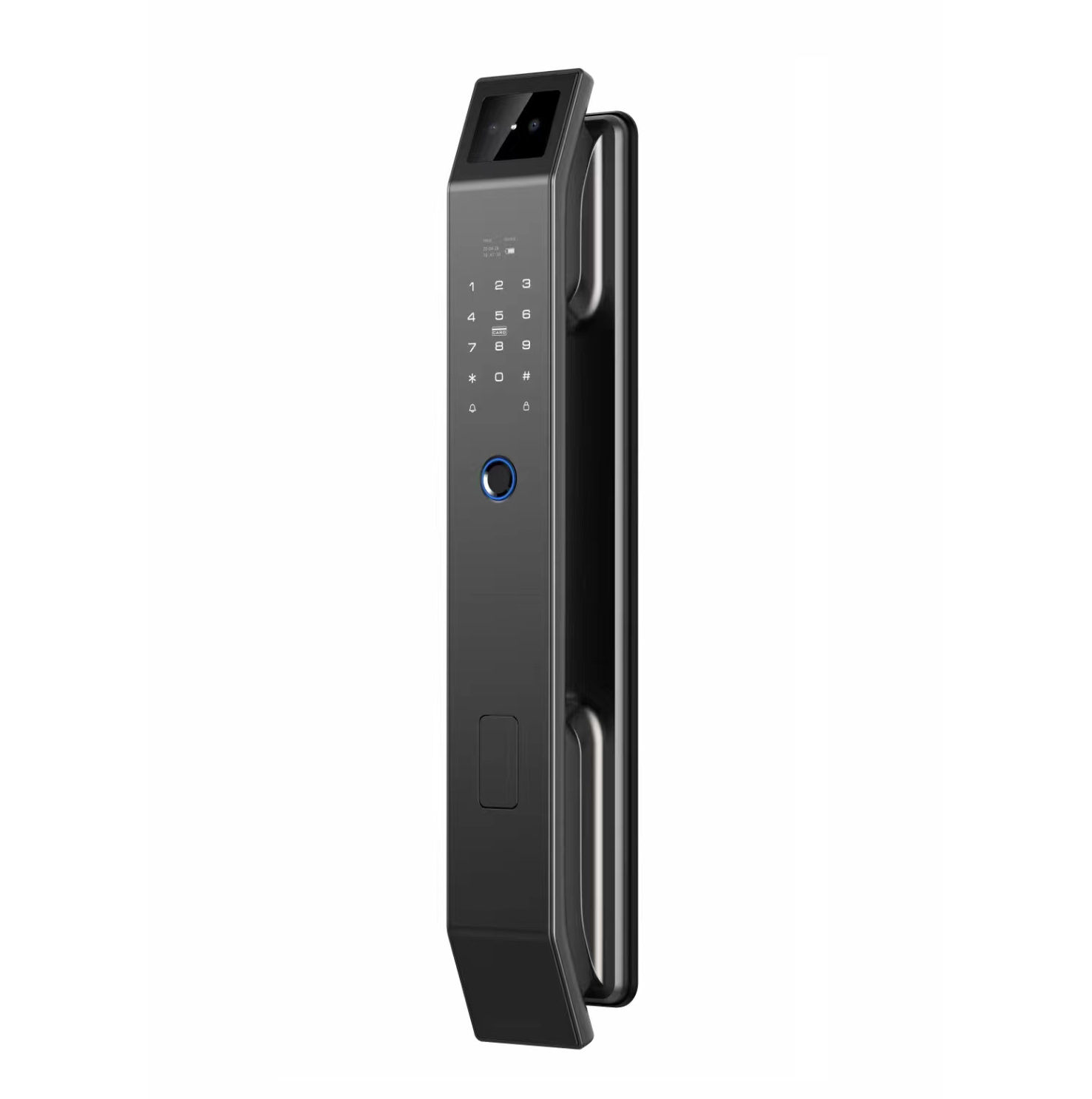 |
1. Access via App/Fingerprint/Password/Face/Card/Mechanical Key.2. High sensitivity of touchscreen digital board.3. Compatible with Tuya App.4. Share codes offline from anywhere, at anytime.5. Scramble pin code technology to anti-peep. | |
| HY04Smart Entry Lock |  |
1. Access via App/Fingerprint/Code/Card/Mechanical Key.2. High sensitivity of touchscreen digital board.3. Compatible with Tuya App.4. Share codes offline from anywhere, at anytime.5. Scramble pin code technology to anti-peep. | |
Mobile Application
The mobile application serves as your smart lock's virtual hub, enabling you to access and utilize its impressive range of features. However, if the app doesn't function optimally, the entire set of capabilities becomes ineffective. Therefore, it's advisable to assess the app's user ratings before making a purchase.
In Conclusion
Despite their slightly intricate nature within the realm of smart home devices, the undeniable convenience offered by smart locks makes them a valuable investment. Moreover, after successfully installing one, handling subsequent installations will become remarkably straightforward.
Post time: Aug-17-2023










